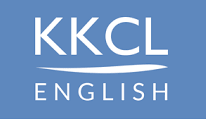To sensitise the learners to the differences in the pronunciation of numbers, e.g., 13 vs 30, 14 vs 40.
PRONUNCIATION JOURNEY:
Step 1: Can you hear the difference?
Ask the learners if they can hear the difference (between the following numbers: thirteen – thirty, fourteen – forty, fifteen – fifty, sixteen – sixty, seventeen – seventy, eighteen – eighty, nineteen – ninety).
Play the recording:
Step 2: Write the numbers on the board or the screen in two columns like this:
| left | right |
| thirteen
fourteen fifteen sixteen seventeen eighteen nineteen |
thirty
forty fifty sixty seventy eighty ninety |
Step 3: Pronunciation journey
Make a copy of the MAP for each learner, project it on an interactive whiteboard or share the map with the learners digitally.
At each number, the learners need to decide whether to go left or right.
Demonstrate the task by reading four numbers. For each word, the learners need to turn left or right according to the word stress.
After reading four words, the learners should arrive at one of the cities at the top of the map.
Example: thirty (turn right at 1) – fifteen (turn left at 2) – seventeen (turn left at 3) – ninety (turn right at 4) -> Paris
Step 4: After the demonstration, the learners can do the activity in pairs.
For visual aid, the stress patterns can be marked with circles above the numbers on the board or screen:
Example:
o O O o
thirteen – thirty
The stressed syllables are highlighted:
thirteen – thirty
fourteen – forty
fifteen – fifty
sixteen – sixty
seventeen – seventy
eighteen – eighty
nineteen – ninety




The BOOST Project (Building Open Online Series for Teaching) aims to improve the digital readiness of teachers of English as a foreign language to students aged 8 -14 by providing an open-access series of engaging native-speaker content videos linked with a Resource Pack of ready-made activities to stimulate production of the language in online learning.
